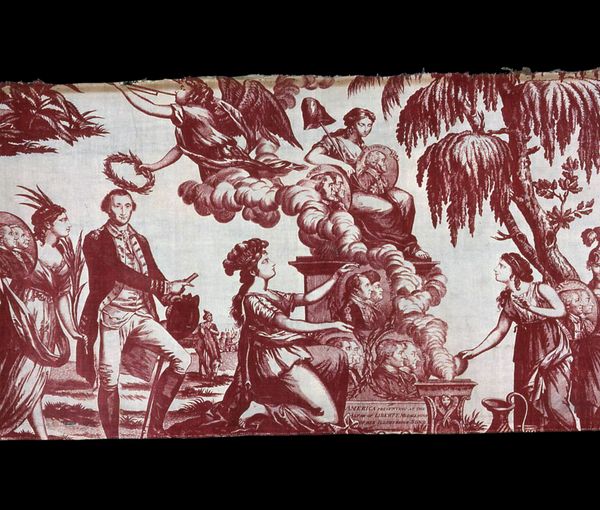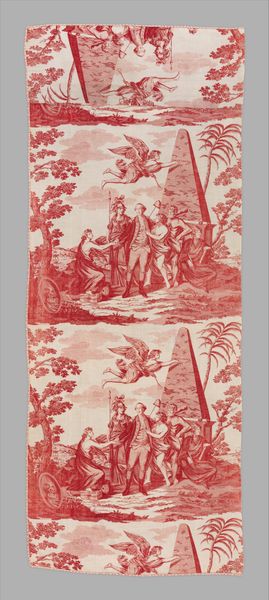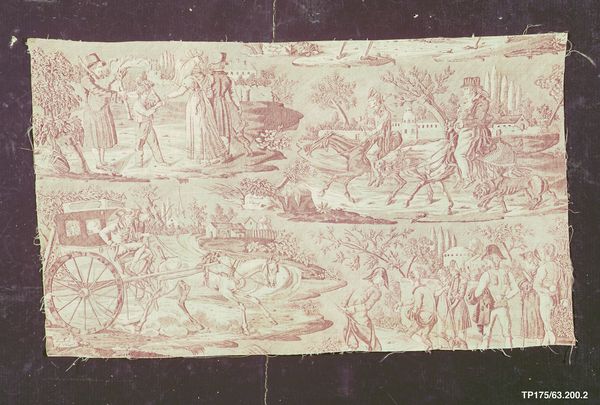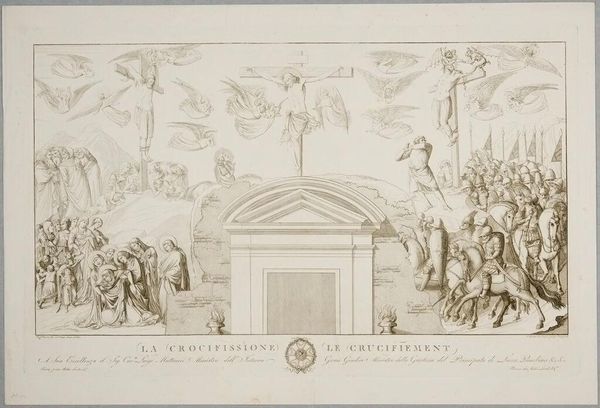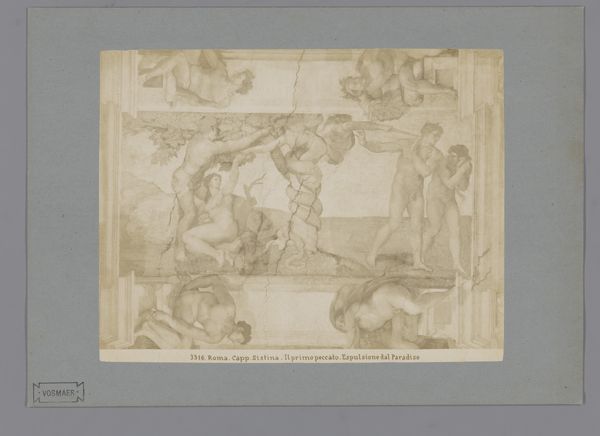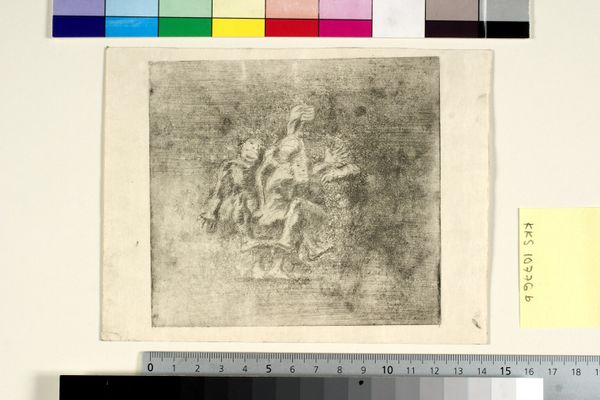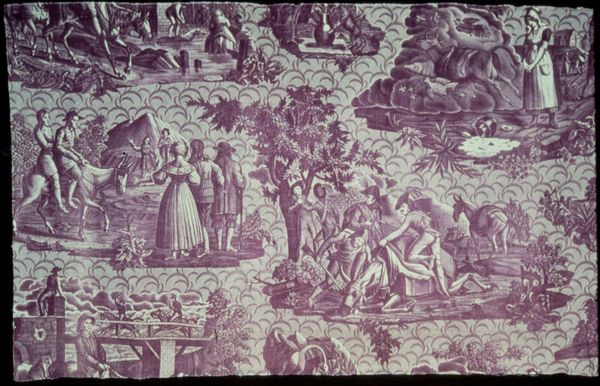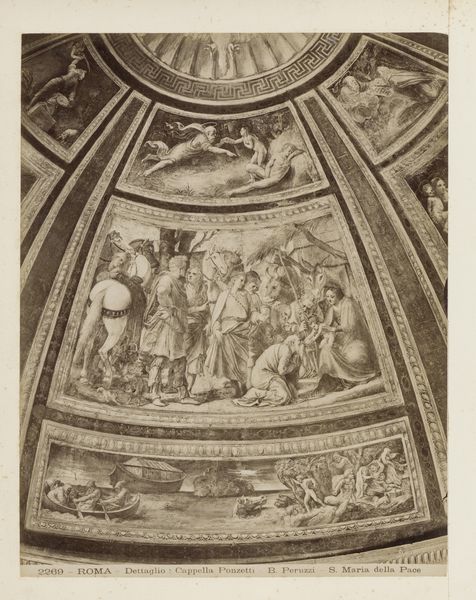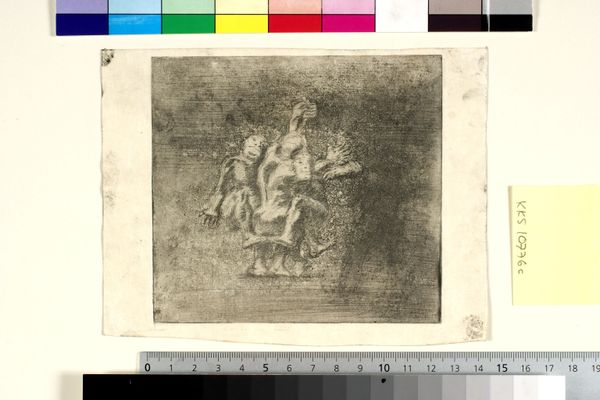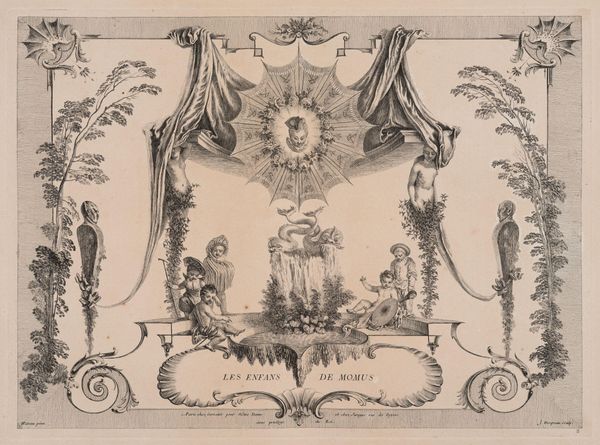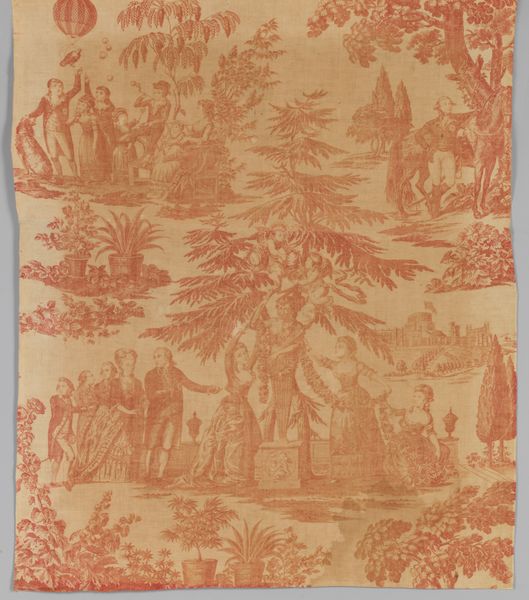
print, textile, sculpture
#
neoclacissism
# print
#
landscape
#
classical-realism
#
textile
#
figuration
#
romanesque
#
sculpture
#
line
#
history-painting
#
decorative-art
Dimensions: L. 18 1/4 x W. 24 inches (46.4 x 61.0 cm)
Copyright: Public Domain
Editor: This textile, "Scènes romaines" by Bartolomeo Pinelli, dates back to 1811. I'm immediately struck by its almost monochromatic, sepia-toned quality, and the depiction of classical scenes… It feels like a tableau vivant frozen in time. What historical context am I missing here? Curator: This work, with its clear neoclassical elements and Roman themes, is deeply embedded in the political and cultural landscape of its time. Pinelli, through "Scènes romaines," wasn't just depicting scenes, but actively constructing and idealizing a vision of Roman history for his contemporaries. What purpose might that serve, do you think? Editor: Maybe to invoke a sense of national pride, a connection to a glorious past… or perhaps something to aspire to during a time of upheaval. Curator: Exactly. Neoclassicism itself was intertwined with ideas of civic virtue, order, and rationality, characteristics considered desirable in a society recovering from revolution. It was a conscious choice to associate the present with a specific interpretation of the past. Editor: So, the image becomes less about accurate representation and more about shaping a specific narrative? Curator: Precisely. And it’s important to ask, *whose* narrative is being amplified, and who is excluded from this vision? Consider the power structures that underpin the creation and consumption of such imagery, particularly in public spaces like museums. This isn't just art, it's a curated form of history designed for a specific audience. Editor: It’s fascinating how art can be a vehicle for projecting national aspirations and excluding alternate views of history. I never thought about the role of museums in this. Curator: It highlights the necessity to think critically about the images we see and the contexts in which they're presented, especially those seemingly objective historical depictions. Every image carries its own set of agendas. Editor: Thank you for expanding my perspective, it’s made me realize that history isn’t fixed, and art like this has the power to mold and alter history, but also tell it. Curator: And recognizing that power is the first step in engaging with art, and history, more thoughtfully.
Comments
No comments
Be the first to comment and join the conversation on the ultimate creative platform.
